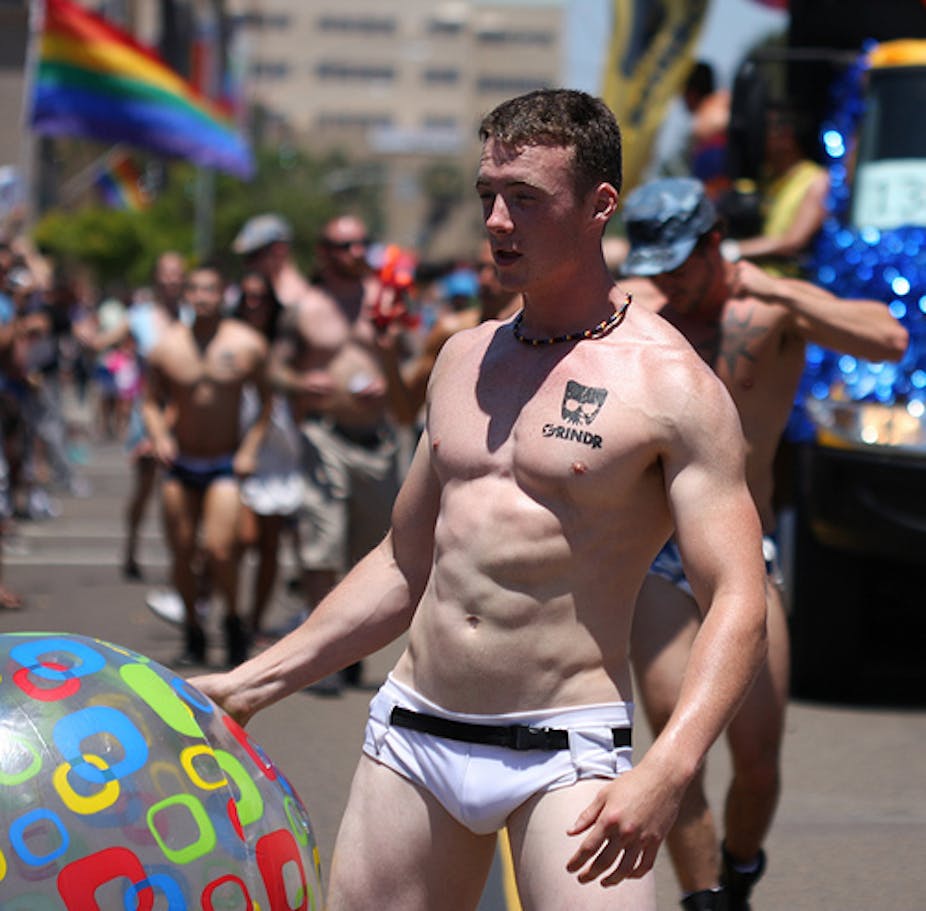The second Stephen Fry mentioned Grindr on Top Gear of course its popularity surged. Not only did the app – designed to help homosexual blokes hook up with those geographically convenient – surge in popularity, but Fry put the app on the radar of straight folk. Wouldn’t it be wonderful if heteros could hook up with the same gay abandon as their homosexual chums?
Ask, my friends, and you shall receive.
Well, sort of.
Introducing Blendr. With an insipid moniker conjuring up images of pulverised fruit and church-run mixers, Blendr is designed to aid the straight person in pinpointing those in their vicinity who are panting and salivating for a little…
Friendship.
Networking.
Business.
Good lord! Weren’t we promised hook-ups?
Whereas Grindr not only has a Stephen Fry endorsement, but has a name – and a bondage mask logo - that encapsulates exactly what it’s all about. Be it frottage - fondly known as the “dry root” at my high school - the bump-n’-grind dance style, or a more vivid way to describe certain penetrative sex styles, Grindr’s objectives are explicit. You aren’t connecting for Monopoly, you aren’t being lured into a Ponzi scheme or connecting to trade brownie recipes. It’s all about the sex.
Not so with the oh so bland Blendr. While the pre-launch speculation billed it as the long-awaited solution to the horny hetero’s hankering for a hook-up, Blendr at best, is a GPS-style Facebook/LinkedIn app, where the focus is on developing a contact list. Exchanging business cards. Meeting up for hot beverage. The grinding is of coffee and maybe teeth too. A quick flick through the site and few libidos will be stirred.
Now available for our perusal and it appears that Blendr is the embodiment of two very potent cultural ideas: that heterosexuals really aren’t as kinky as gays and that heterosexuality is synonymous with being vanilla.
Blendr’s marketing assumes that straight people are monogamous. That they want dinner and a trip to the Multiplex _first _and that they want a little more than quickie sex with someone who just happens to be within genitals’ reach.
The underlying premise of the app is that those few heterosexuals who do want to screw with pomp and props are simply too few to profit from.
Of course, let’s not forget, Blendr isn’t a lonely hearts charity. Evidently some serious thought has gone into its lame packaging.
With heterosexuality rampant, finding likeminded, opposite-sex attracted people is assumed as comparatively effortless. Grindr caters well to a niche market; heterosexuality just isn’t niche.
Perhaps to make the big bucks from a straight version of a gay app means more bells and whistles than mere GPS coordinates. While sure, there’ll always be some heterosexuals who would hook up Grindr style with vigour and vim, perhaps there just isn’t enough of them to make the site profitable.
To have a successful version of an app that looks even remotely like a straight version of Grindr and you need male _and _female participants. Whereas webcam/chat roulette style websites have reputations of being overflowth with seedy lads without shirts, for Blendr to attract women and the sex and sleaze needs to be played down and the safety played up.
In practice, perhaps Blendr might get used more like its out and proud cousin. After all, much technology finds its feet in the marketplace: Craig, for example, likely never dreamt that his Frisco events list could also be used by opportunistic rapists.
Then again perhaps if there really was money to be made this way, Blendr would have existed long ago and blendr-ing today would have far sexier connotations.

